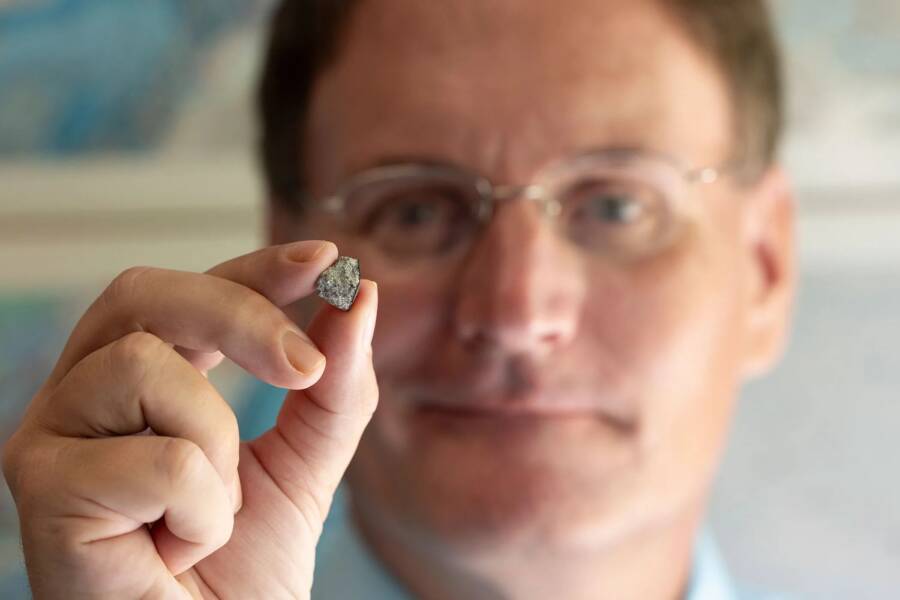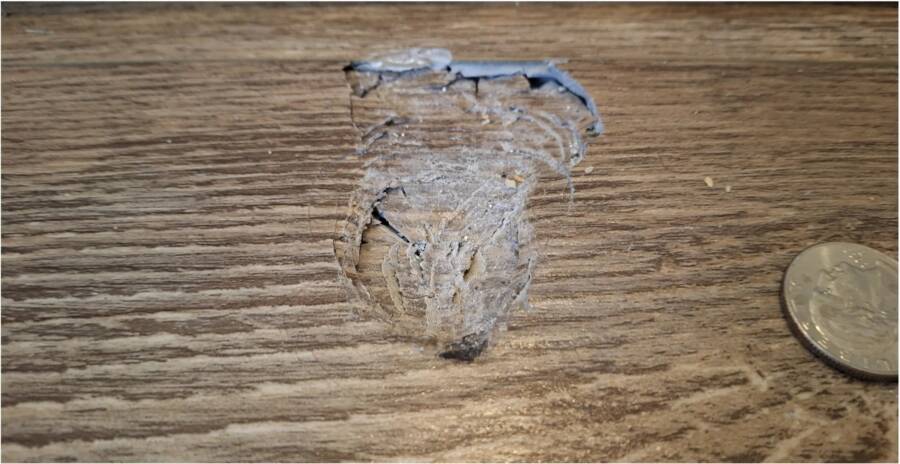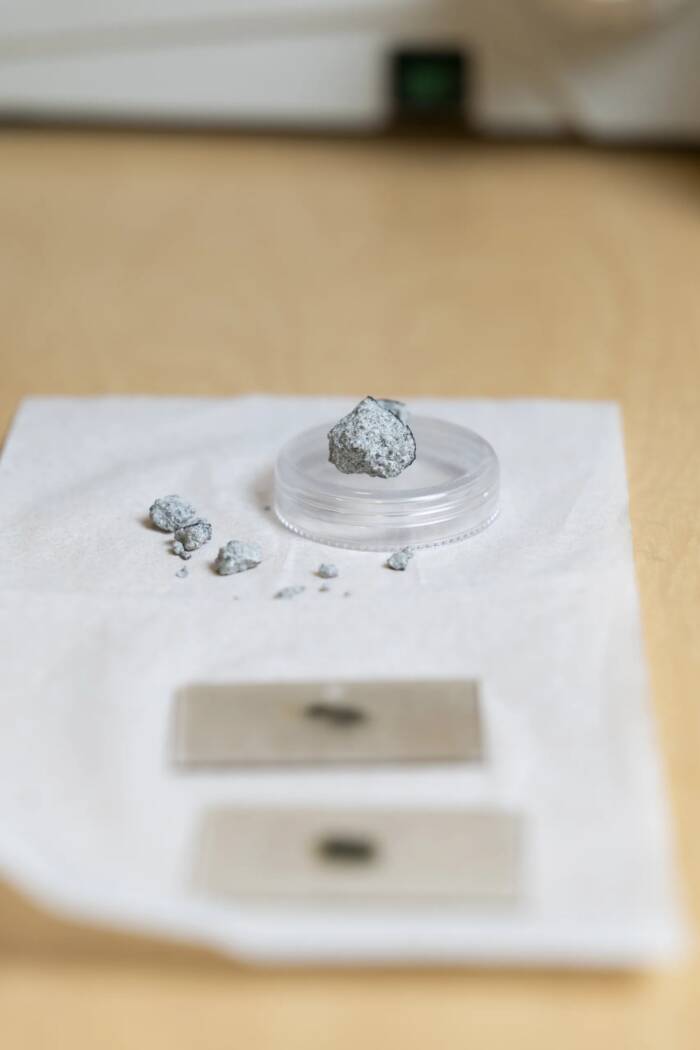The McDonough Meteorite originated in the asteroid belt between Mars and Jupiter and is 4.56 billion years old.

Andrew Davis Tucker/University of GeorgiaThe meteorite crashed to Earth on June 26, landing in McDonough, Georgia, not far from Atlanta.
A meteorite fragment that crashed through a Georgia home’s roof is older than the Earth, according to researchers.
Planetary geologists analyzed the space rock after it blazed through the atmosphere on June 26, 2025. Now, they’ve determined the rock likely formed approximately 4.56 billion years ago — 20 million years before the Earth.
A Meteorite Crashes Into A Georgia Home
As the meteorite entered Earth’s atmosphere on June 26, people across the southeastern United States called authorities to report a fireball slashing through the sky. The space rock was traveling at a speed of “10 football fields in one second,” according to a statement released by the University of Georgia.
Others who didn’t see the meteorite heard the sonic boom it created — and one resident in McDonough had an even closer encounter with it. A fragment of the space rock about the size of a cherry tomato tore through his roof, air duct, insulation, and ceiling before landing on his floor, leaving a half-inch crater. “There was enough energy when it hit the floor that it pulverized part of the material down to literal dust fragments,” said Scott Harris, a planetary geologist at the University of Georgia who analyzed the meteorite.

University of GeorgiaThe cherry tomato sized rock crashed through the man’s roof and became lodged in the floor.
Reportedly, the man is still finding meteorite dust in his home. The fragments of the space rock that were lodged in the floor were collected and studied by researchers to determine their age and composition.
“This particular meteor that entered the atmosphere has a long history before it made it to the ground of McDonough,” said Harris, “and in order to totally understand that, we actually have to examine what the rock is and determine what group of asteroids it belongs to.”
Analysis revealed that the space rock, dubbed the McDonough Meteorite, was an ordinary chondrite, the most common type of meteorite recovered from Earth. Scientists were also able to determine that the meteorite formed about 4.56 billion years ago, making it older than the Earth, which is approximately 4.54 billion years old.
Harris explained, “It belongs to a group of asteroids in the main asteroid belt between Mars and Jupiter that we now think we can tie to a breakup of a much larger asteroid about 470 million years ago.”
There Is More To Be Learned From The McDonough Meteorite
Along with the research on the rock’s origins, the University of Georgia is working with other geologists at Arizona State University to submit their findings to the Nomenclature Committee of the Meteoritical Society.
The McDonough Meteorite is the 27th meteorite to be recovered in Georgia and only the sixth that people have witnessed fall in the state.

Andrew Davis Tucker/University of GeorgiaThe fragments of the meteorite that were analyzed by researchers.
“This is something that used to be expected once every few decades and not multiple times within 20 years,” Harris said. “Modern technology in addition to an attentive public is going to help us recover more and more meteorites.”
Technology can also help scientists better understand how meteors break up in the Earth’s atmosphere. Using the information from the McDonough Meteorite’s fall, Harris hopes to better determine the threat from larger asteroids that don’t fragment before crashing to the Earth’s surface.
“One day there will be an opportunity, and we never know when it’s going to be, for something large to hit and create a catastrophic situation. If we can guard against that, we want to,” Harris explained.
The meteorite is currently being stored at the University of Georgia for further analysis, but several other pieces of the rock that crashed to Earth on June 26 will be put on display at Tellus Science Museum in Cartersville, Georgia.
After reading about the meteorite that crashed through a Georgia roof, go inside the mystery of the Carancas meteorite sickness. Then, meet Ann Hodges, the only known person to be hit by a meteorite.





